They shouted at the bear. The military will stop collecting field first-aid kits for their money
June 11.06.2022, President of the Russian Federation Vladimir Putin signed Federal Law No. 166-FZ dated June 17, 1 “On Amendments to Article 31-XNUMX of the Federal Law “On Defense” and Article XNUMX of the Federal Law “On the Fundamentals of Protecting the Health of Citizens in the Russian Federation”, giving the Russian Ministry of Defense the authority to establish a list of conditions under which first aid is provided to military personnel in wartime and combat operations. Previously, the current legislation did not take into account the peculiarities of the medical support of the Armed Forces of the Russian Federation in terms of first aid.
Now the Ministry of Defense of the Russian Federation must develop and approve a list of conditions in which first aid is provided, as well as the rules for its provision, the standard for equipping first-aid kits and sets of medical equipment. At the same time, federal executive bodies authorized in the field of command and control of other troops, military formations and bodies may independently establish the features of their equipment.
I'll start from afar.
the USSR
In the days of the USSR, the fighters did not have individual first-aid kits. The charter ignored the possibility of the need for self-help, and the wounded had to rely mainly on sanitary instructors, porters, miracles and associates.
The nurse's medical bag included:
• phenazepam (tranquilizer and anticonvulsant);
• etaperazine (antiemetic and muscle relaxant effect);
• doxycycline hydrochloride (antibiotic);
• ammonia in ampoules;
• iodine in ampoules;
• sodium bicarbonate in powder (soda);
• dressing material;
• tourniquet;
• safety pins;
• folding knife;
• notepad and pencil.
Painkillers, including XNUMX% promedol, and hemostatic agents were already in the military medical bag for paramedics and medical instructors.
The main task of the orderly was to eliminate the immediate danger to the life of a fighter and then deliver him to a safe place. According to the order dated August 2, 1941, it was necessary to pull the wounded out of the danger zone with their personal weapons. Starting with 15 evacuated medics, they were awarded the medal "For Military Merit". And in total for the entire period of World War II, more than 115 thousand medical workers were presented for the award. On the other hand, more than 85 medical workers died or went missing during the same period.
During the most fierce battles, there were not enough orderlies for everyone, or they could not get to the wounded, so it was sometimes extremely difficult to wait for qualified help.
At the same time, tankers and pilots had their own first-aid kits, designed for self-help and mutual assistance. Tankers were asked to use Vaseline in tubes for burns or eye ointment. Otherwise, the first-aid kit differed little in content from the orderly's bag. At the disposal of the pilots, in addition to the contents of the orderly's bag, an ammonia solution (1 ampoule) and phenamine (aka amphetamine narcotic drug, 1 pack) were available.
It was impossible to provide all types of troops with narcotic drugs, due to the lack of production capacity. Industrial production of pervitin did not begin until 1946, and phenamine was obtained primarily from the British.
In 1978, by the Decree of the State Standard of the USSR, the "Individual First Aid Kit - AI-1" was adopted for supply. It was intended for the prevention of shock in case of wounds, severe injuries and first aid for radiation, chemical and bacterial lesions, as well as their combinations with injuries. In addition to the AI-1M configuration, there were also AI-2, AI-3 1VS, AI-3 2SP and AI-4.
Magnificent in their functional simplicity, AI first aid kits were eventually banned in accordance with the Order of the Ministry of Emergency Situations of the Russian Federation of December 23.12.2005, 4, and for good reason. They were completed, as indicated above, with drugs for chemistry, radiation, bacteria, vomiting and seizures, and, of course, for pain. In addition to knowing when and what to take, the painkiller was analogous to morphine, which made such first-aid kits a target for lovers of illegal substances. At the same time, many drugs caused severe harm to health, which was considered a reasonable price for an emergency solution to a problem that arose, for example, radiation. Analogues of the AI-XNUMX first aid kit are still found in the civil defense and emergency services.
Our time
Nowadays, soldiers are equipped with a first aid kit (APPI), which is designed to provide first medical self-help or mutual assistance. Accepted for supply by order of the Ministry of Defense of the Russian Federation No. 744 dated May 21, 2011.
In the maximum configuration ... Once again. At maximum configuration provides:
• temporary stop of external bleeding, including massive;
• treatment of the wound circumference;
• imposition of primary aseptic and occlusive dressings on the wound or burn surface;
• anesthesia for wounds and burns;
• carrying out antidote therapy in case of damage by organophosphorus poisonous substances;
• prevention of radiation injuries;
• prevention of nausea and vomiting;
• prevention of wound infection and lesions by biological (bacterial) agents;
• carrying out degassing of infected areas of the skin and uniforms.
Contains innovative medicines and medical devices (gemostop, etc.). The information is taken from the manufacturer's website - "Spetsmedtekhnika".
This is probably why they placed the following paragraph there: “All information presented on the site, including information about products and their characteristics, is for informational purposes and is not a public offer, defined by the provisions of Art. 437 of the Civil Code of the Russian Federation. Please check with our managers for the latest information.
The first aid kit contains:
• individual medical dressing package - 1 piece;
• local hemostatic agent - 1 piece;
• hemostatic tourniquet - 1 piece;
• means for disinfection - 1 package;
• leaflet - 1 piece.
Note: it is allowed to replace components with similar ones that are approved in accordance with the established procedure for use in medical practice.
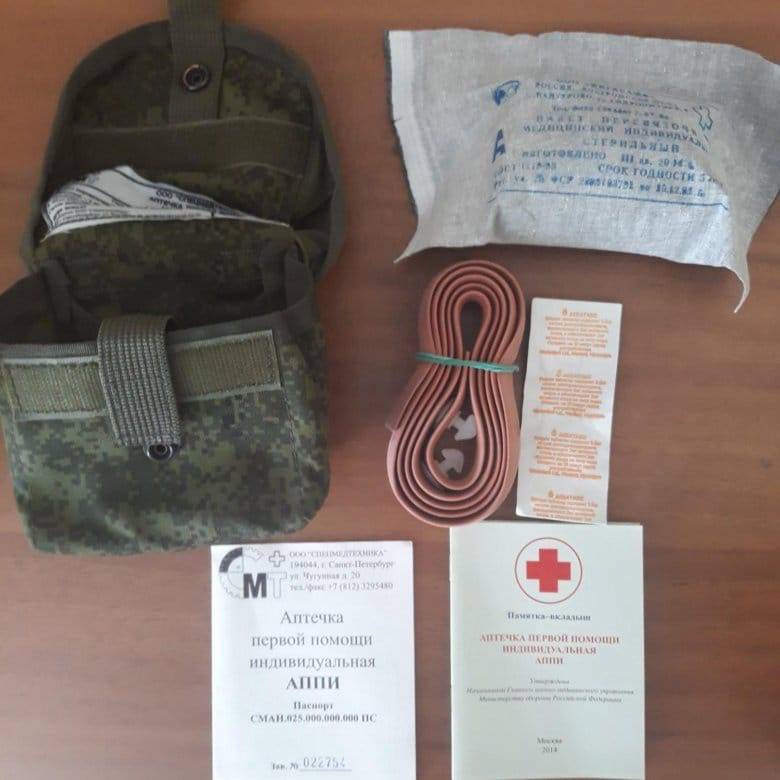
It seems that the orderly during the Great Patriotic War was staffed at least the same way.
At the moment, the fighters are forced to complete both individual and squad first-aid kits at their own expense. It looks like this.
In fact, the need to “change something” has been spoken about for a long time and with maniacal persistence. It was voiced by the active military, retired military, interested doctors and simply not indifferent.
Collected and analyzed foreign experience. Tourniquets, tourniquets, hemostatics, tubes, pharmacy pouches were purchased and compared. And the more years passed, the less hope there was for positive changes. There was a feeling that the self-sufficiency of fighters with modern medical and technical means was turning into a vicious circle.
Of course, at this stage we only have a paper signed by the President. Will the Russian Defense Ministry use ready-made knowledge and solutions or will it develop everything from scratch? How long will it take to develop and manufacture? Is there a suitable production or will we get a second API? Will medical specialists go to the unit for the mandatory training of fighters in “tactical” and not very medicine? Time will tell.
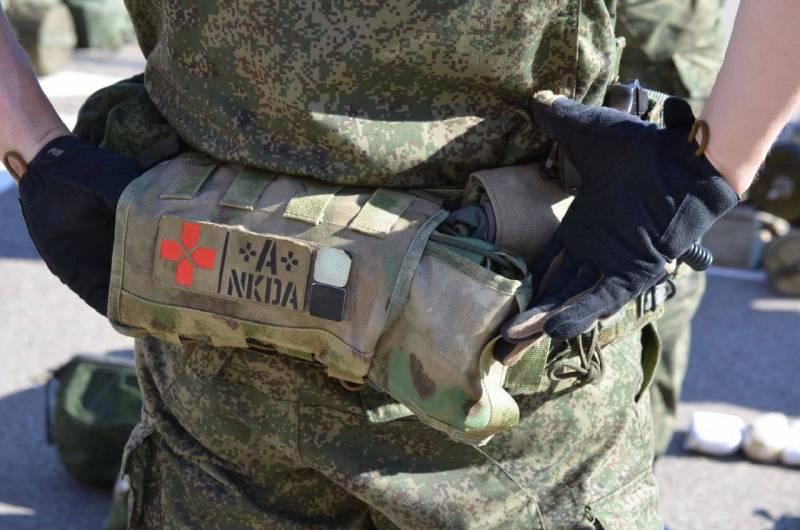
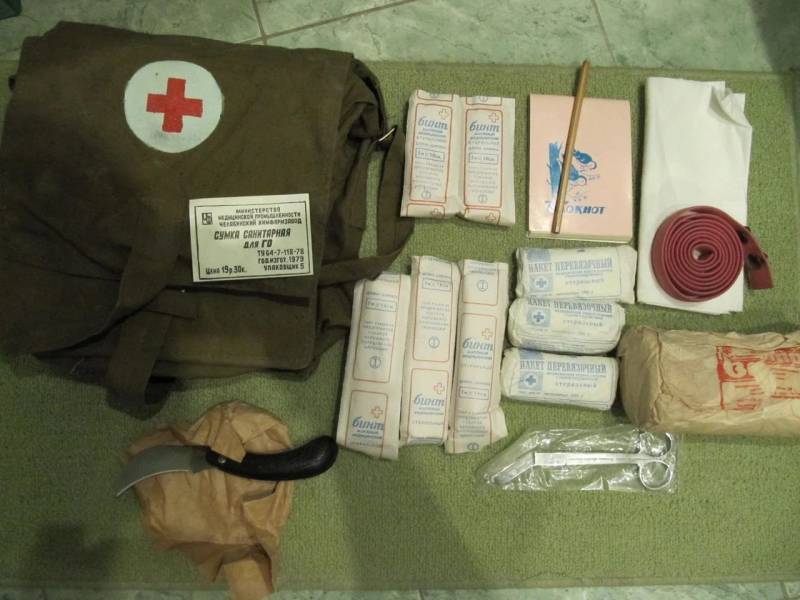
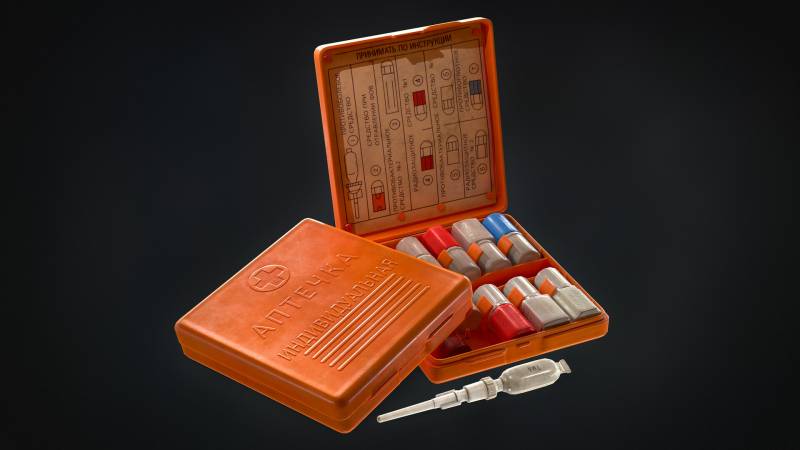
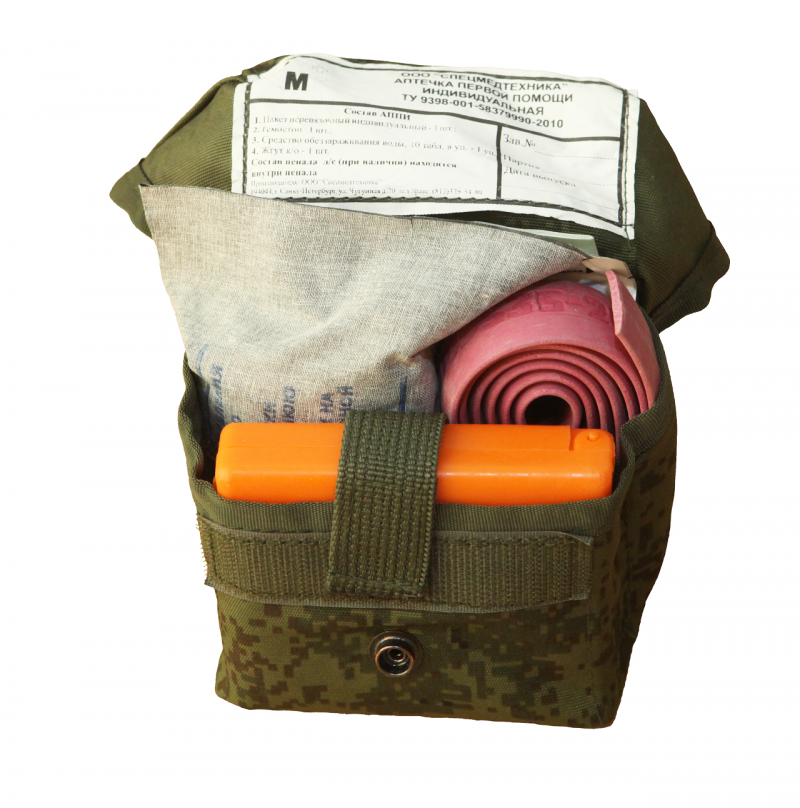
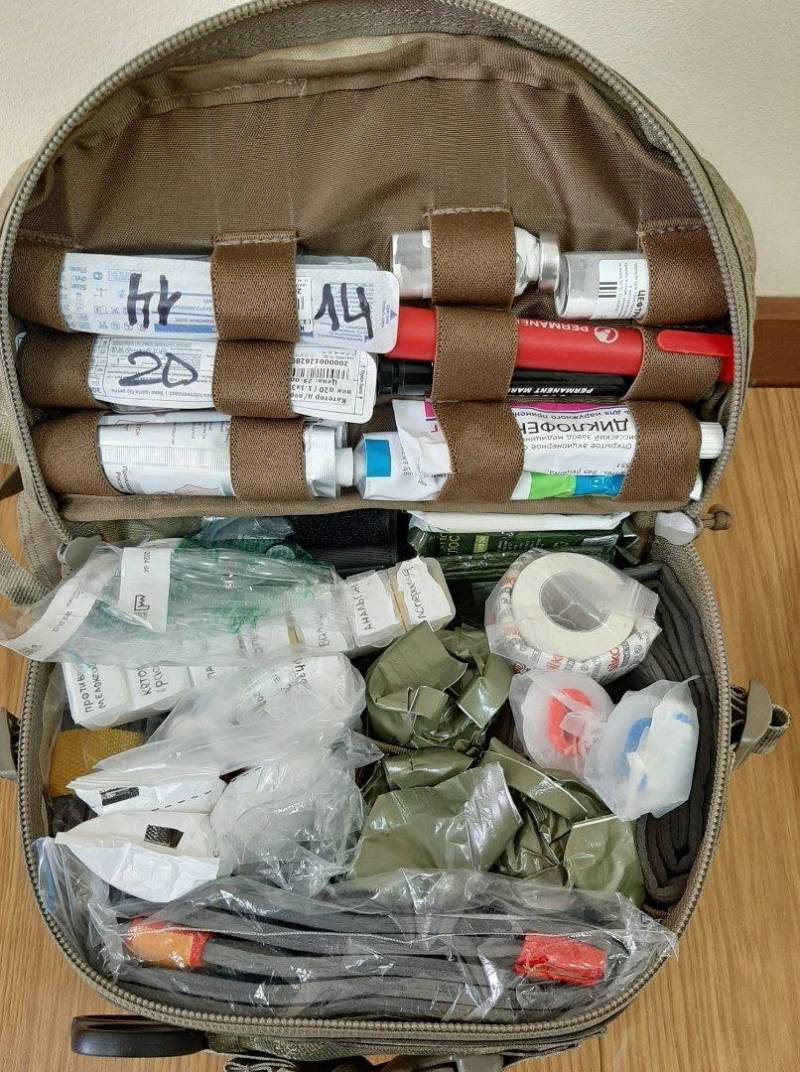
Information